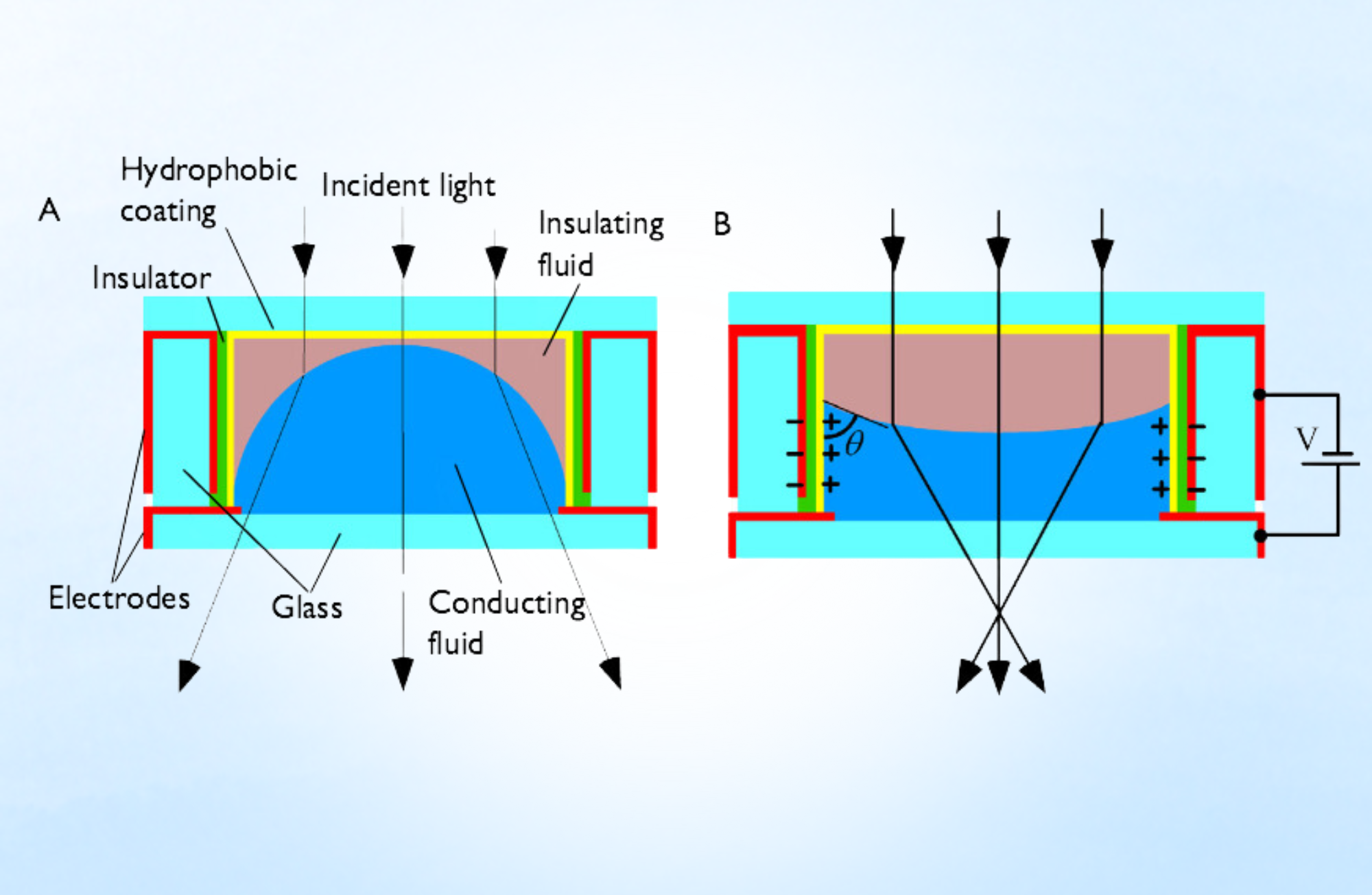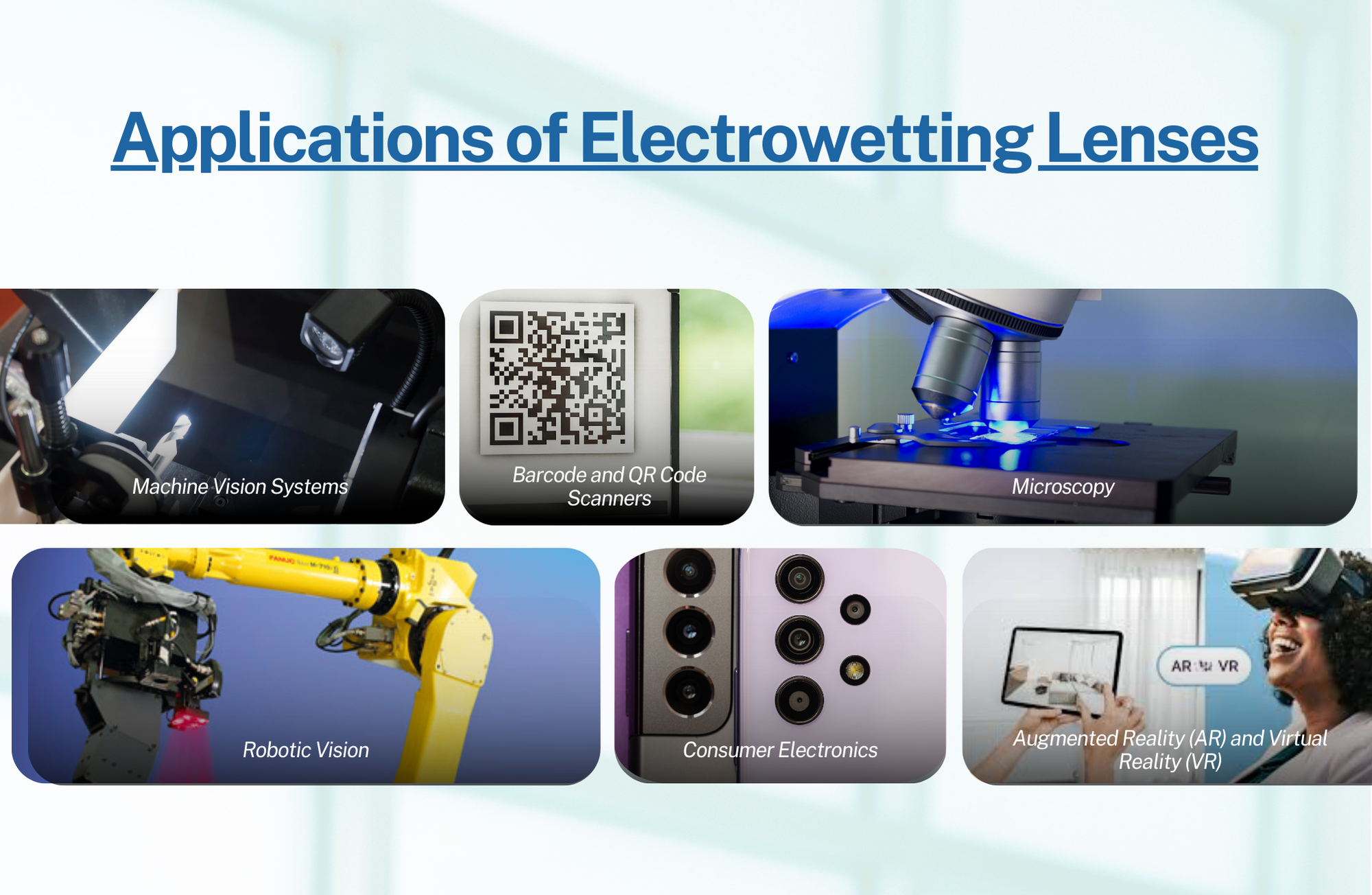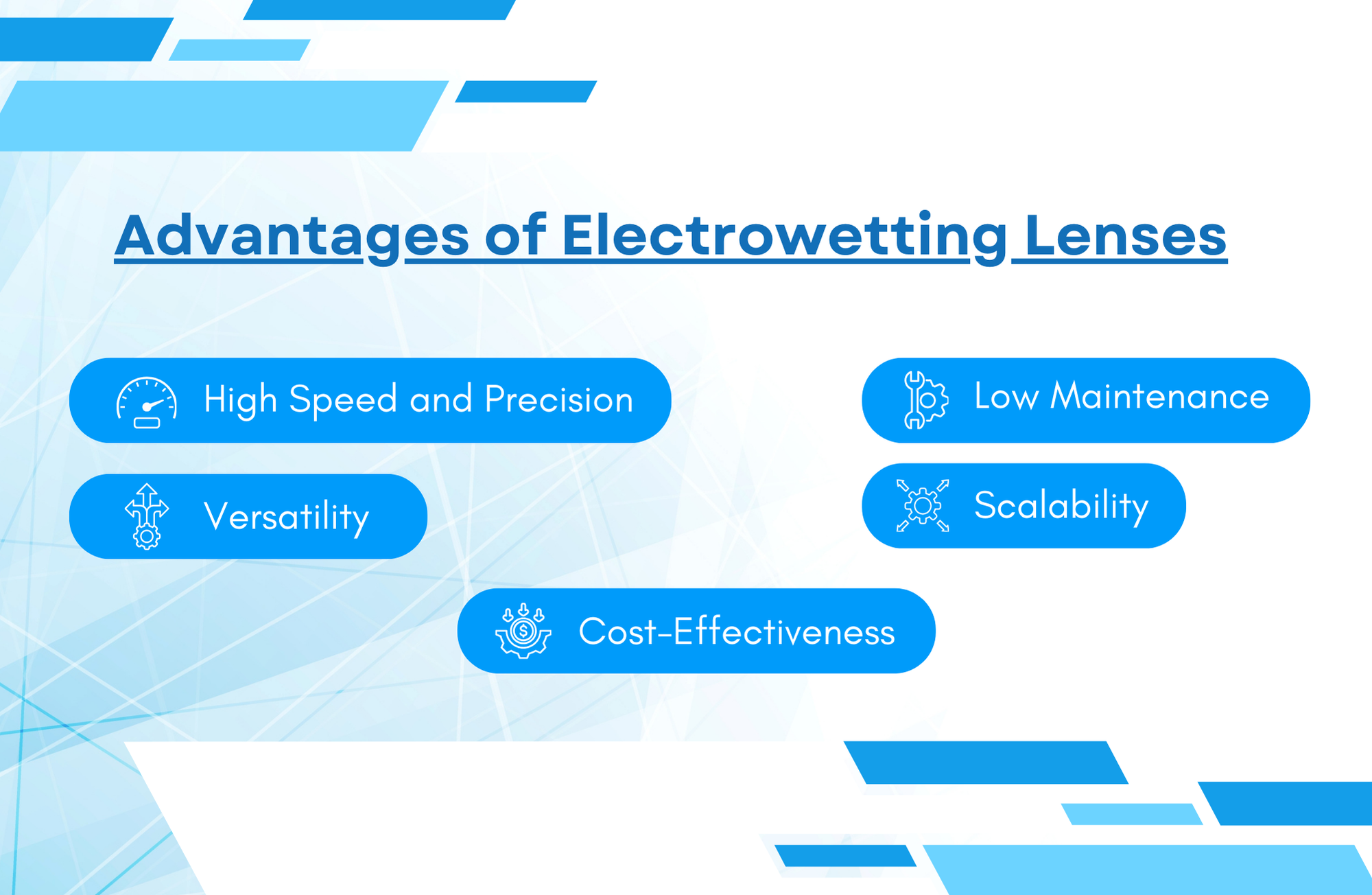What is an Electrowetting Lens
Published on: Jan 10, 2025

Written by: Content team, Intelgic
What is an Electrowetting Lens?
An electrowetting lens is an innovative optical component that uses the principle of electrowetting to dynamically adjust its focal length. Unlike traditional lenses that rely on mechanical adjustments, electrowetting lenses change their curvature by applying an electrical voltage to a liquid interface. This unique capability enables rapid, precise, and continuous focus adjustments, making them ideal for applications in machine vision, inspection automation, and other imaging systems requiring flexibility and accuracy.

How Do Electrowetting Lenses Work?
The operation of an electrowetting lens is based on the manipulation of liquid surfaces using electrical voltage. Here’s a step-by-step explanation:
- Lens Structure:
- Comprises two immiscible liquids: a conductive liquid (such as water) and a non-conductive liquid (such as oil).
- These liquids are encapsulated within a transparent housing, forming a liquid-liquid interface.
- Voltage Application:
- When a voltage is applied, the shape of the conductive liquid changes due to the electrowetting effect, altering the curvature of the liquid-liquid interface.
- Focal Adjustment:
- The change in curvature adjusts the focal length of the lens, allowing for rapid and precise focus control.
- Advantages of No Moving Parts:
- With no mechanical components, electrowetting lenses are more durable, compact, and efficient than traditional lenses.
Key Features of Electrowetting Lenses
- Fast Focusing:
- Adjusts focus in milliseconds, ideal for high-speed imaging applications.
- Compact Design:
- Lightweight and space-saving, making them suitable for portable and embedded systems.
- Durability:
- Absence of mechanical moving parts reduces wear and tear, ensuring long-term reliability.
- Wide Focal Range:
- Provides a broad range of focal adjustments, accommodating diverse imaging requirements.
- Energy Efficient:
- Consumes minimal power, enhancing efficiency for continuous operations.
Applications of Electrowetting Lenses
- Machine Vision Systems:
- Enhances focus adaptability in automated inspection systems, ensuring precise imaging across varying object sizes and distances.
- Barcode and QR Code Scanners:
- Enables fast and accurate focus adjustments for reading barcodes of different sizes and orientations.
- Microscopy:
- Facilitates rapid focus changes for examining minute details in biological and industrial samples.
- Robotic Vision:
- Integrates seamlessly with robotic arms for dynamic focus adjustments in inspection and assembly tasks.
- Consumer Electronics:
- Used in smartphone cameras for autofocus and zoom functionalities.
- Augmented Reality (AR) and Virtual Reality (VR):
- Enhances optical performance in wearable devices by enabling real-time focus adjustments.

Advantages of Electrowetting Lenses
- High Speed and Precision:
- Rapid response times and precise control make them ideal for dynamic imaging environments.
- Versatility:
- Suitable for a wide range of applications, from industrial automation to consumer devices.
- Low Maintenance:
- With no mechanical components, maintenance requirements are significantly reduced.
- Scalability:
- Compact and lightweight design allows easy integration into small and large systems alike.
- Cost-Effectiveness:
- Long lifespan and minimal power consumption offset initial costs over time.

Challenges and Considerations
- Temperature Sensitivity:
- Performance can be affected by extreme temperatures, necessitating controlled environments in some applications.
- Material Compatibility:
- Careful selection of liquids and housing materials is required to ensure stability and longevity.
- Initial Costs:
- While cost-effective in the long run, the initial investment may be higher compared to traditional lenses.
How to Choose an Electrowetting Lens
- Application Requirements:
- Define the specific imaging tasks, such as inspection, microscopy, or barcode scanning, to determine the required focal range and speed.
- System Compatibility:
- Ensure the lens is compatible with the existing camera and sensor setup.
- Environmental Factors:
- Consider temperature, humidity, and vibrations that may affect performance.
- Control Interface:
- Select a lens with control interfaces compatible with your system’s hardware and software.
Intelgic’s Expertise in Electrowetting Lenses
At Intelgic, we are at the forefront of adaptive optics, providing tailored solutions with electrowetting lenses. Our services include:
- Lens Selection:
- Helping you choose the right lens based on your unique application needs.
- System Integration:
- Ensuring seamless compatibility with cameras, lighting, and control systems.
- Customized Solutions:
- Designing bespoke systems to tackle complex imaging challenges.
- Comprehensive Support:
- Offering training, maintenance, and troubleshooting to maximize system performance.
Electrowetting lenses represent a paradigm shift in adaptive optics, offering unprecedented speed, precision, and versatility for a wide range of applications. By leveraging the electrowetting effect, these lenses deliver dynamic focus control without the limitations of mechanical components. Intelgic’s expertise ensures that you can fully harness the potential of electrowetting lenses to optimize your imaging systems and achieve superior results.
Contact us today to explore how electrowetting lenses can transform your imaging and inspection processes.

